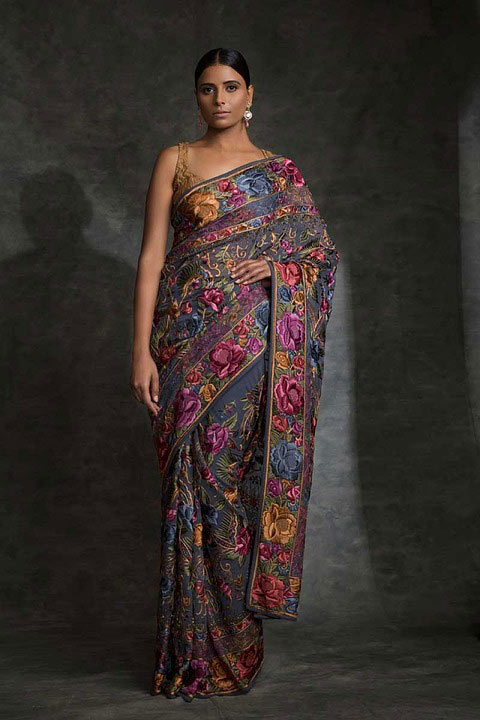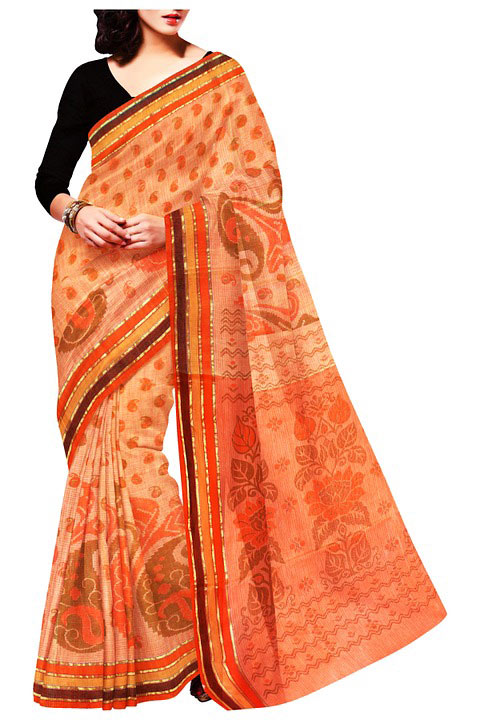The sari or saree is a traditional garment worn by women in India, Bangladesh, Nepal & so on. Read this guide if you want to know how to wear a saree perfectly.

The sari is one of the oldest types of garments in the world still worn today. Seventy-five percent of Indian women wear a sari on a daily basis today.
Yet, it’s also mentioned in the ancient Vedas. These are ancient Hindu texts thought to have been written about 5,000 years ago, or 3,000 BCE.
Some Indian women have begun to adopt more Westernized styles of everyday dress. Saris, though, are still brought out for special occasions like weddings.
And, why not? A sari may be a form of dress rooted in hundreds, if not thousands, of years of tradition. Yet, it looks thoroughly modern and sophisticated.
Would you like to know how to wear a saree (or sari)?
We can help. Below you’ll find the complete guide for beginners, showing you how to drape a sari perfectly. Read on for more information!
What Is a Sari?
 Sari’s have been worn for centuries not only in India but also in:
Sari’s have been worn for centuries not only in India but also in:
- Sri Lanka
- Pakistan
- Bangladesh
- Nepal
For many women in these countries, their saris are heirlooms, with each generation passing their saris on to the next women. Yet, for an equal number of women, they are everyday garments. In any case, saris continue to influence cutting-edge fashion designers today.
Historically, a sari was a single piece of fabric, It was uncut, handwoven, and usually nine yards in length.
Traditional saris had a heavier section called a “pallu.” This was like a decorative border or hem. The pallu allowed the sari to drape correctly.
Today, however, you can find saris woven both by hand and at mills.
Some saris still have sections of heavier density. By contrast, others have a single, consistent density. Saris are made anywhere from 3.5 to 9 yards in length, depending on the desired draping style.
As mentioned above, many Indian women reserve saris for special occasions like weddings. But, it’s also possible to buy a completely polyester sari for less than $10 (US).
Introducing: How to Drape a Sari
It’s no surprise that, with a garment this old, there are hundreds of ways to wear it. What’s more, each region of India has its own sari style. For example, there’s the Gujarati, Maharashtra, Tamilian, and Bengali styles.
As a beginner, though, let’s focus on the most common way to drape a sari: the Nivi style draping. Then, if you want, you can learn about other or regional draping styles.
Getting Down to It: How to Wrap a Sari
 Wearing a sari properly requires more than the sari itself. You’ll also need:
Wearing a sari properly requires more than the sari itself. You’ll also need:
- safety pins
- the blouse
- the petticoat
Before the British Raj, some women in India wore their sari’s without undergarments today called a blouse and petticoat. You can imagine what the prudish Victorians thought of that! You can also probably tell by the thoroughly non-Indian names of these items that they’re not native garments.
Whatever you think of the origin, however, the tradition has stuck. Today, women wear both the blouse and petticoat under their saris.
What is a Blouse and a Petticoat?
Blouses are short-sleeved or sleeveless shirts. They can have pretty much any neckline. Blouses end, though, just below the bust. They are also tight-fitting.
The petticoat goes from your waist all the way to the floor. It’s tied tightly at your waist with a drawstring. Its base should match your sari color, although you don’t want any part of the petticoat to be seen outside of the sari.
Tying Your Sari
You’ve got your blouse and petticoat. Everything matches. Now what?
Learning how to drape your sari perfectly will take some time, but it’s worth it!
Begin by tucking the upper end of your sari into your petticoat. It should be inserted just a little bit to the right of your navel. At this point, the lower end of the sari should be touching the floor.
The whole length of the sari will come around your left-hand side. Come around completely until you reach the point at which you started.
The Floating or Pleated Look
 In your hand should be the pallu, or decorated part of the sari. You have a choice here, based on whether you want a floating or pleated look.
In your hand should be the pallu, or decorated part of the sari. You have a choice here, based on whether you want a floating or pleated look.
For the floating look, bring the pallu towards the left side of your shoulder from under your right arm. Then, pin it on your left shoulder.
The pleated look takes a bit more time but looks lovely. Bring the pallu from under your right arm. Start making vertical pleats about 5-6 inches in length with the border (if your sari has one).
Keep doing this along the entire breadth of the sari.
When you’re done making your pleats, tuck them neatly into your petticoat. This should be one slightly to the left of your navel. They should also open to your left.
Now you’ve draped and pleated your sari. All that’s left is to the fasten the end. To do this, simply raise any remaining portion of your sari onto your back.
Bring it up under your right arm and over your left shoulder. It should fall to about the level of your knees. If you like, use a safety pin at the shoulder to prevent the sari from slipping.
Now you’re done! The style outline above is the basis for most sari styles. Once you’ve mastered it, you’re on your way to being a sari draping pro!
Are you inspired now to wear a beautiful sari to your next formal occasion? If so, check out this site for a stunning collection of saris.
Wrapping Up How to Wear a Saree or Sari
That’s it! Everything you need to know to get started learning how to wear a saree. Once you master the technique, you’re sure to turn heads!
If you enjoyed this article, why not check out some of our fashion articles? You’ll find information on everything from formal wear like wedding dress trends to more casual styles.
There’s sure to be something interesting for every taste!










